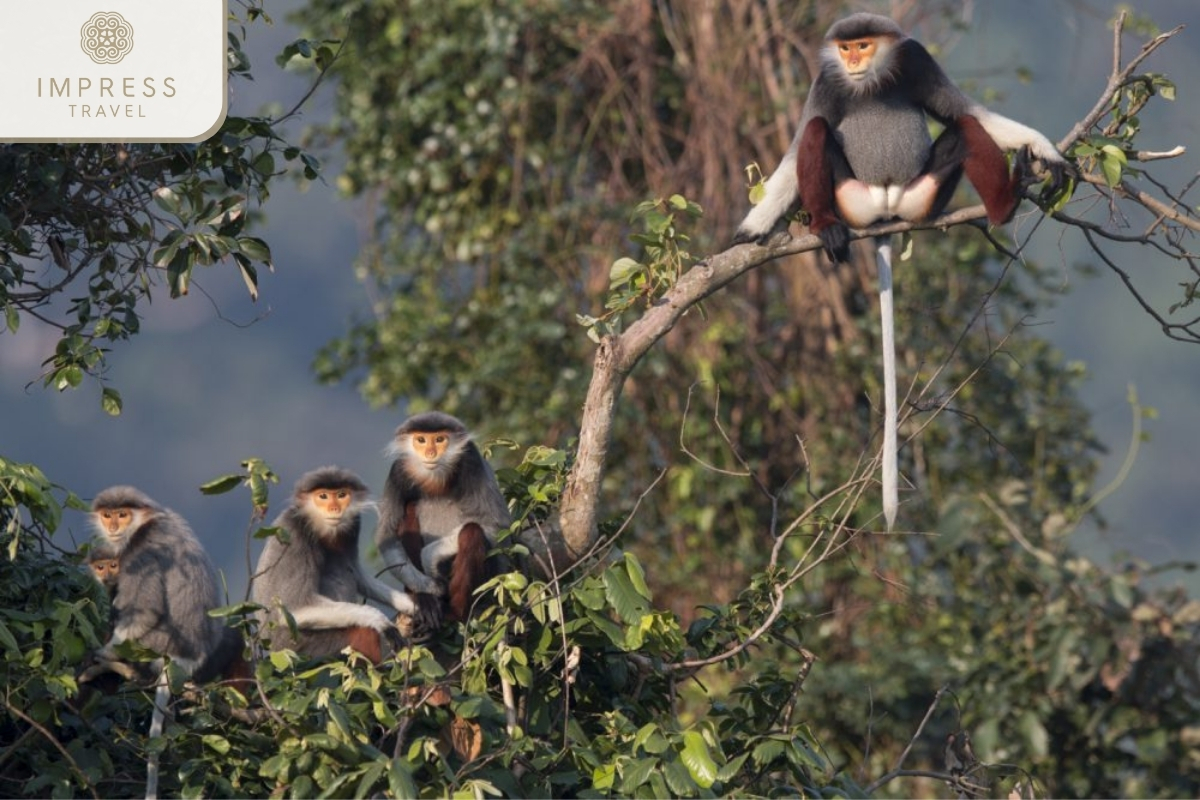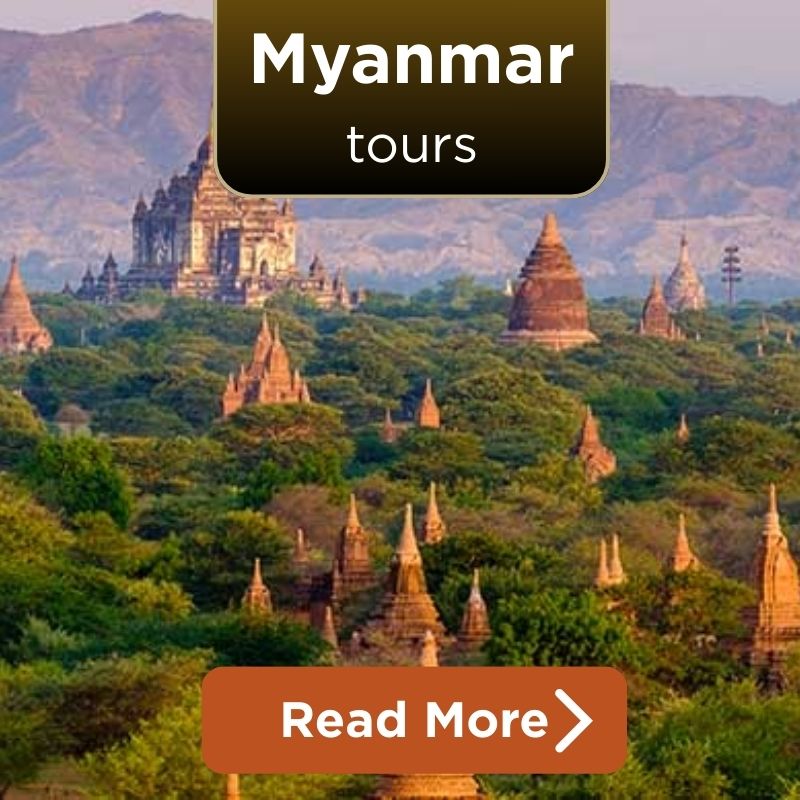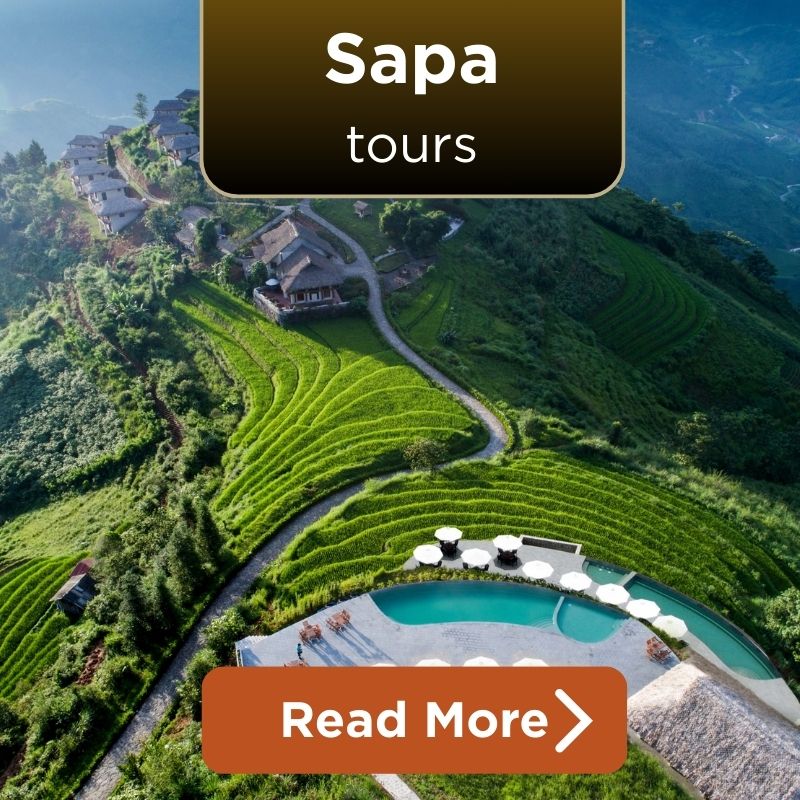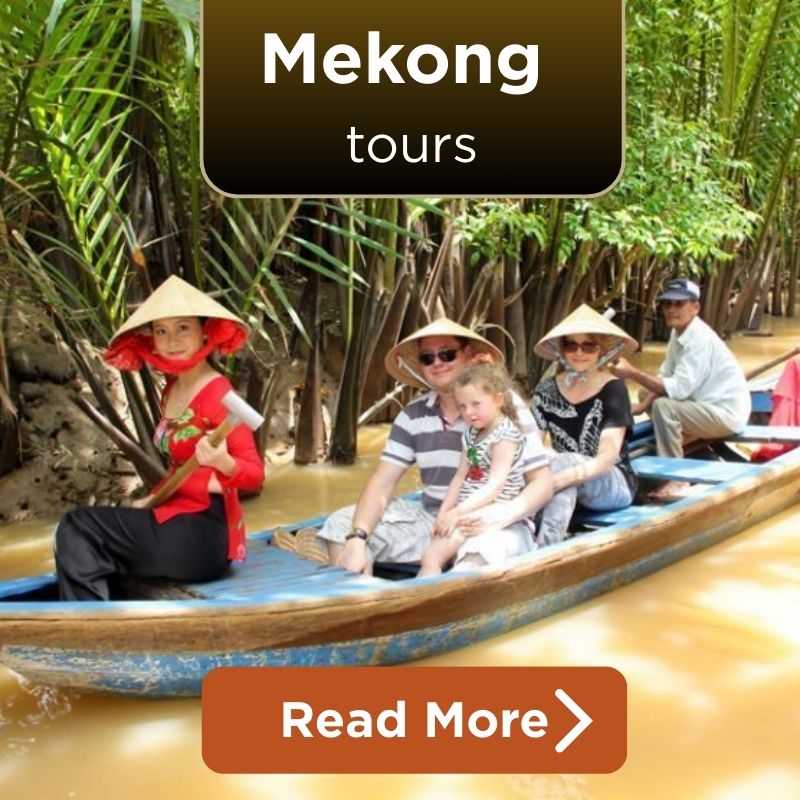If you want to dive into the colorful and manifold local life in Vietnam, well then Monkey Mountain for Da Nang Tour is everything you need. In addition to stunning views and intense trails, the tour offers guests the rare opportunity to see these beautiful Red-Shanked Douc Langur in their natural habitat. So here is a full English breakdown of all the cool things you have to look forward to on your once in a lifetime tour.
How to Get Monkey Mountain Da Nang

The map points to Monkey Mountain
This verdant paradise is located in the northeast of Da Nang, and is an ideal place to escape from the hustle and bustle of city life. The mountain, which is a haven for both environmentalists and adrenaline junkies alike, holds a bounty of white sand beaches, thick rain forests and a whole slew of different flora and fauna.
Monkey Mountain is relatively easy to get to. Taxi, rental motorbike or a guided tour from Da Nang city center. It usually takes about 30 minutes, and a drive through sea view of Hoang Sa Road is also a pleasant part of the experience.
Ideal Time to Get Monkey Mountain Da Nang Tour

See Monkey Mountain at sunset
The most appropriate times to travel to Monkey Mountain for Da Nang Tour are April and September. These months have mild weather, and it is comfortable around these months to be outdoors and spot some of the island’s wildlife.
If you visit the Vietnamese Primate Conservation Center in this time slot you will be presented with the greatest opportunity to see the rare Red-Shanked Douc Langur up and about. These are the times when these primates are most active so you will have the best chances of seeing them as they go about foraging for food or dashing through trees.
Monthly Breakdown
- April to June: The forest is in full bloom, and the Red-Shanked Douc Langurs are often seen enjoying the abundance of fresh leaves and flowers.
- July to September: Best time with pleasant weather, most part covered under lush greenery, best for photography
Characteristics and Beauty of Red-Shanked Douc Langur

A family of red-shanked douc langurs
Name and Classification
The beautiful Red-Shanked Douc Langur Wildly called the Pygathrix nemaeus, this charismatic monkey is a joy indeed. They go by the charming name of Voọc chà vá chân nâu in Vietnam, but you’ll also hear Vietnamese people call them Chà vá chân đỏ, Khỉ bảy màu and sometimes even Khỉ chú lính. For the individual who loves deer, each name keeps a touch of the wonder and appeal of this fantastic creature.
These langurs fall within the Old World Monkeys, which sits under the primate order and Cercopithecidae family. They are a member of their genus, Pygathrix, the same as the closely related Gray-Shanked Douc Langur (Pygathrix cinerea) and Black-Shanked Douc Langur (Pygathrix nigripes). Among the three, they make up a noteworthy trio of primates that are as scientifically significant as they are striking.
A Million Years in the Making
The Red-Shanked Douc Langur has been around for over a million years. The Gray-Shanked Douc Weber’s Ethiopia Archived 2010-01-17 at the Wayback Machine is now known to be the closest living relative of these primates, according to gene studies since about a year ago. Their history is amazing when you think about how long dinosaurs have been around and the transformation that created their distinct characters.
Where to Find Them
They reside mostly in the Truong Son mountain range, spanning from southern Laos and central Vietnam to the northeastern regions of Cambodia. Most of the populations are found in central Laos but there are important groups in Vietnam as well, especially in places like the Phong Nha – Ke Bang National Park and the Son Tra Peninsula in Da Nang.
Highly localized in its distribution, the species is known from only several national parks and nature reserves in Vietnam, from Pù Mát in Nghe An to Chư Mom Rây in Kon Tum. The rugged Son Tra Peninsula, in particular, is a hotbed of population estimates: anywhere from 180 to over 350 monkeys. They are one of the most densely populated Red-Shanked Douc Langurs in the world!
Physical Description and Age Differentiation
First, we will go a little deeper into their beautiful faces. Adult males are larger than females, reaching a body length ranging from 55-63 cm with tails nearly equal in length to their bodies. Males can get to be closer to 5.8-11kg, while females are usually 6.4 to 8kg.
However, it is their bold coat that makes them unique. Visualize a primate adorned with the finest, most vibrant of fabrics. They feature bright redshanks, a golden face, white forearms, black hands, and a long white tail. The adult males may even have a prominent white mane that comes down from the sides of their mouths.
Identifying their age is best left up to the Devine I think, but if it is anything to go by the coat colors and size, then you can have an indication. While newborns present a completely uniform coloration of the body (except for the black face), they significantly contribute to changing this appearance as they develop. Adult coat colors are always multi-colored and by 18 months of age, the coat is complete as an adult. Young hyenas, up to around three years old, do retain some dark facial markings but these also lessen as individuals get older.
Reproduction and Lifespan
These langurs have a relatively early reproductive history. Females can reproduce from three years of age, while this happens one year later in males. They birth about one to two litters a year, and in their lifetime they can have offspring from the ages of around five to eight years old.
In the wild, they breed throughout the year but peak birthing seasons often coincide with local dry seasons, possibly about reproductive output and food availability. The gestation time for orcas is about 180-200 days, which means that they generally give birth every 24 months.
Habitat and Adaptations
Red-Shanked Douc Langur, a resident of the treetops in tropical rainforests, semideciduous forests, and even limestone forests. It usually occurs at altitudes of 1300 m and less. In Son Tra, bear demonstrations on the beach foraging- and also demonstrated its great adaptability to different habitat requirements
Diet and Feeding Habits
What the hell do these multicolored monkeys eat? Their diet consists mostly of leaves, hence why they are folivores but at certain times of the year, will also eat fruits, seeds & flowers. In Son Tra, where over 150 plant species from their studies have been identified in the diet, Hatinh langurs are feeding specialists. Adult langurs eat 1.79 kg per day on average in leaves, suggesting their status as an important group of foliage consumers in the local habitat.
Social Structure and Daily Life
Red-Shanked Douc Langurs- The Red-Shanked Douc Langur is a very social animal that generally lives in groups composed of one adult male, several females, and their offspring. They may also converge at times, and form larger troops with dynamic social structure. They spend time daily resting, eating, moving about and connecting with others in their group. On average, these orangutans rest for 30% of the time during the day, spend 28.6% traveling to get food, socialize for about 21.7%, and feed roughly 13.7% of the time.
Conservation Status
Red-Shanked Douc Langurs are both beautiful and ecologically important primates, however, they are subjected to high levels of threats. The destruction of their forest habitat and illegal hunting had brought them close to the edge. They are considered by the IUCN Red List as critically endangered and need a conservation effort.
Vietnam has a Red Data Book that legally protects them, as well as numerous government decrees. The species might survive, thanks to these measures, but it will take ongoing help and international cooperation if they are to live on.
Activities on the Monkey Mountain Da Nang Tour

Observe through the lens
Wildlife Photography Opportunities
So, for all photography aficionados, this trip is a photographer’s dream! Monkey Mountain Da Nang opens the doors to many natural wildlife photo opportunities. Using the jungle as the frame and the sea view as the background, try taking a picture of the Red-Shanked Douc Langur
Exploring the Diverse Flora and Fauna
The diversity here is mind-boggling. As we push further and further into the forest, you will range across an array of plants, from towering ancient trees to ephemeral wildflowers. Your guide will point out particular species and their functions within the ecosystem. It is a wonderful way to get an exceptional insight into the natural heritage of the area.
Visiting Historical Sites and Pagodas
Your visit to Monkey Mountain for Da Nang Tour would not be full if you did not drop in at Linh Ung Pagoda. Scary Lady Buddha or Linh Ung Pagoda: You will find the biggest scare here which is the biggest Lady Buddha statue in Vietnam reaching 67 meters. The peaceful surroundings and the architecture are breathtaking, do check this place out. The guide will tell you historical and cultural stories about the pagoda while you visit it.
Relaxing on Pristine Beaches
Relax on one of this peninsula’s beautiful beaches after a day of trekking and exploring. The golden sandy beaches are just ideal to unwind yourself. Take a dip or bake in the sun by reclining and surveying all of those sights, sounds, and small but big landscape elements that keep you coming back to Litchfield.
Hiking to the Mountain’s Peaks for Panoramic Views
Adventurous types can take the hiking trail up to the top of Monkey Mountain for panoramic views across the bay. It won’t always be easy, but the prize is invaluable. At the top, you can also enjoy an unrestricted view of Da Nang city from the coastline, overlooking the thick forests below and the endless horizon. One you will never forget until well after your descent.
Tips for a Memorable Tour

Visitors are extremely excited
- Wear Comfortable Clothing and Footwear: Dress and be sure to wear the proper footwear: The terrain is rocky, so put on comfortable shoes.
- Bring a Camera or Binoculars: There are gorgeous sights you won’t want to miss.
- Stay Hydrated: Living in a desert hiking can be exhausting especially in the summer months.
- Listen to Your Guide: They have a wealth of knowledge and can enhance your experience with fascinating facts and stories.
Tips for Capturing Stunning Photos of Red-Shanked Douc Langur

Brown-shanked douc langurs look for food
Essential Photography Gear
For the best wildlife photography, consider bringing:
- A DSLR or mirrorless camera with a telephoto lens
- A tripod for stability
- Binoculars for spotting animals from a distance
Techniques
Be as discreet as possible (quiet, at a distance) approaching your subject Capture the colors and details of your snaps in natural light.
Timing
The ideal time for light is of course either early in the morning or around sunset. It is better to be patient and wait for the right time when you can find the langurs in their natural habit.
Conclusion
The Monkey Mountain for Da Nang Tour offers visitors an encounter with the stunning Red-Shanked Douc Langur requiring an extreme level of ecotourism and thoughtful conservation. Hence, quickly book a tour with IMPRESS TRAVEL now for an incredible experience to discover everything about Monkey Mountain. BOOK YOUR TRIP with IMPRESS TRAVEL. Don’t forget to regularly follow our Fanpage for more interesting information about traveling Danang to and to book Danang Tours at the best prices.


































































